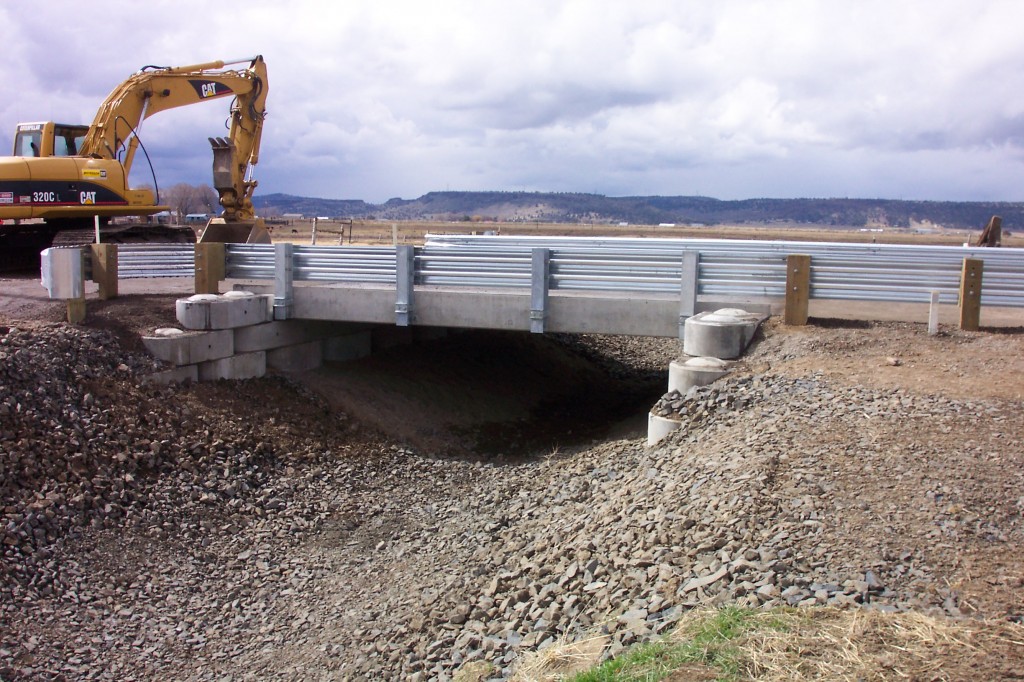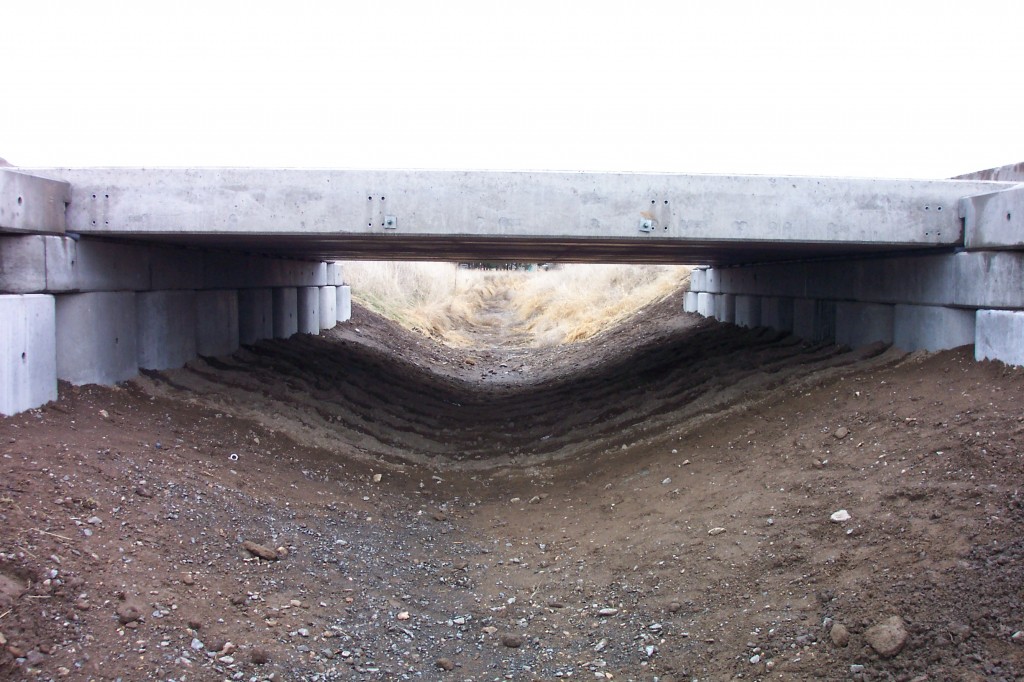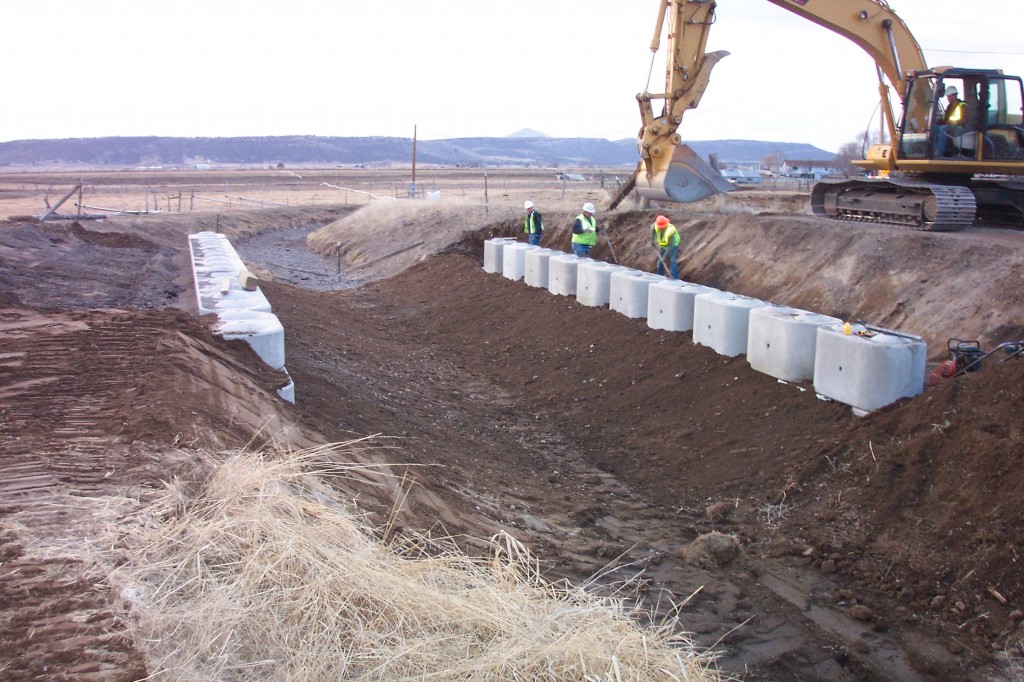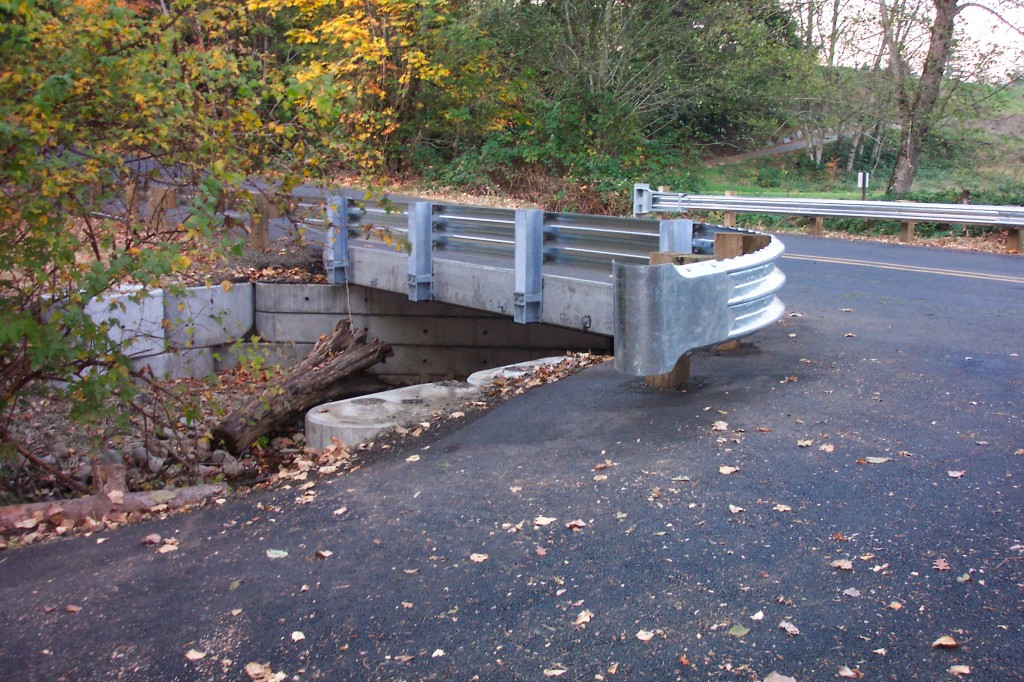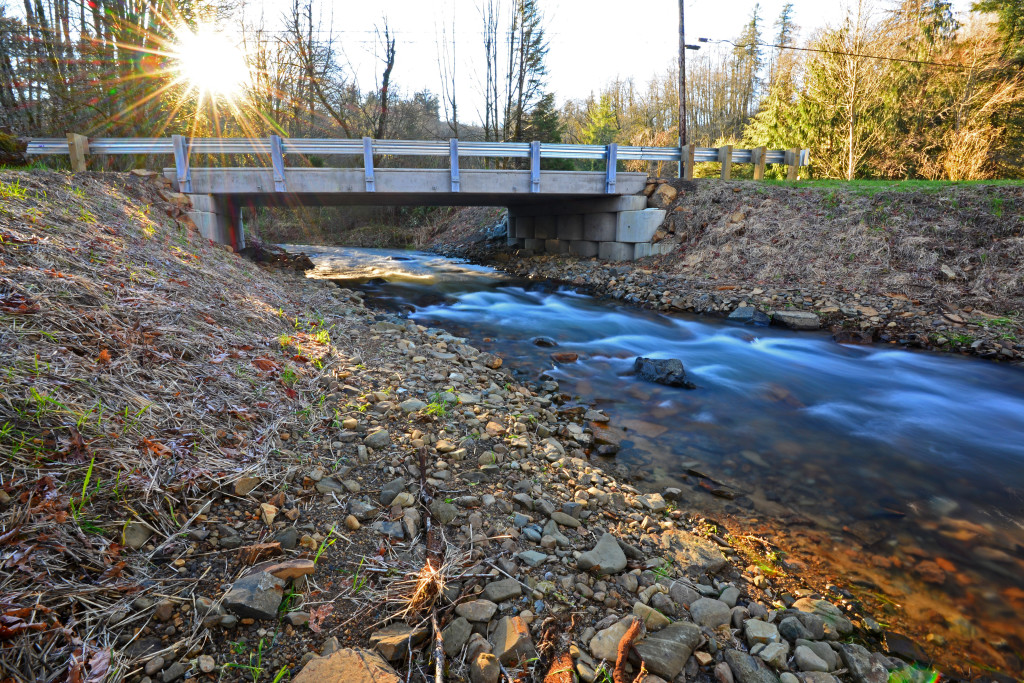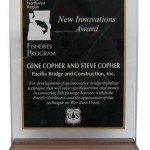 Pacific Northwest Region Fisheries Program:
Pacific Northwest Region Fisheries Program:
For development of an innovative bridge-building technique that will save significant time and money in correcting fish passage barriers within the Pacific Northwest, and the application of this technique on Wee Burn Creek.
Case Study
Project Summary
The pipe arch and circular CMP were undersized and prone to woody debris plugging and overtopping. The culverts were also velocity and depth barriers to salmonids. Wee Burn Creek is a significant spawning and rearing stream for coho salmon. Extensive stream restoration was conducted from 2000 to 2003, creating channel complexity and fish habitat. This road-stream crossing was the last remaining barrier to fish migration and sediment mobility in the stream.
A newly patented modular bridge was selected as the replacement structure. The design criteria used called for a structure that was a minimum of 1.2 x bankfull channel width + 2 ft (0.6 m) with a natural streambed that passes a 100-year peak flow. The length and height of the bridge were increased to accommodate passage of large quantities of woody debris transported by the stream. The modular bridge abutments were placed 3.5 ft (1.1 m) below the finished streambed at the design slope of 0.9%. The channel is relatively stable, containing bedrock chutes, and is not expected to incise at the new crossing.
Steel road plates driven vertically into the channel bed were used for upstream and downstream coffer dams. Streamflow was pumped around the worksite. To reduce turbidity, water pumped from the worksite passed through a clam shell paste filter and a diffuser at the outfall, followed by rows of bio-bags and straw bales.
River run material mixed with fines created a low-porosity streambed mixture for placement under the bridge. The channel material was shaped to include a 1 ft (0.3 m) high x 4 ft (1.2 m) wide floodplain on each bank. The material was soaked for compaction, and the sediment-laden water filtered before discharge into the stream. The bridge deck was placed after in-channel work was completed.
Challenges
A sewer line ran along the center of the road 1 ft (0.3 m) below the streambed. The use of modular abutment blocks avoided the need to move the sewer line. Instead, the line at the crossing was placed into a ductile iron pipe resting on the first row of abutment blocks. The following rows of blocks were placed around the line.
Wee Burn Creek is located 6 ft (1.8 m) from the downstream property owners driveway. A guardrail was required to meet County requirements. Due to the close proximity of the driveway, the bridge was designed with a 40° skew to allow enough room for the guardrail approaches.
Post Project Observations
Spawning coho were observed under the bridge 45 days after project completion. Two weeks later a second pair was observed spawning under the bridge. Although no official surveys have been conducted, monitors walking up the stream have observed juvenile coho in nearly every pool and pond.
Over the winter there were a few 2 to 5-year storm events and one heavy snow melt. The new crossing required no maintenance during these events. However a nearby tributary overspilled its banks creating significant erosion close to one of the wing walls.
Lessons Learned
Improved coordination with the utility companies may have saved three days of construction.
Due to the proximity of the tributary, incorporating a drain rock swale should have been included in the original design.
The modular bridge proved well suited for the site. The deck slabs provided for a low-profile channel-spanning structure. It could be installed quickly since it required no concrete form-work or pours. Also, an excavator was sufficient for placing the modular abutment blocks and deck slabs, avoiding the need for a crane.
————
